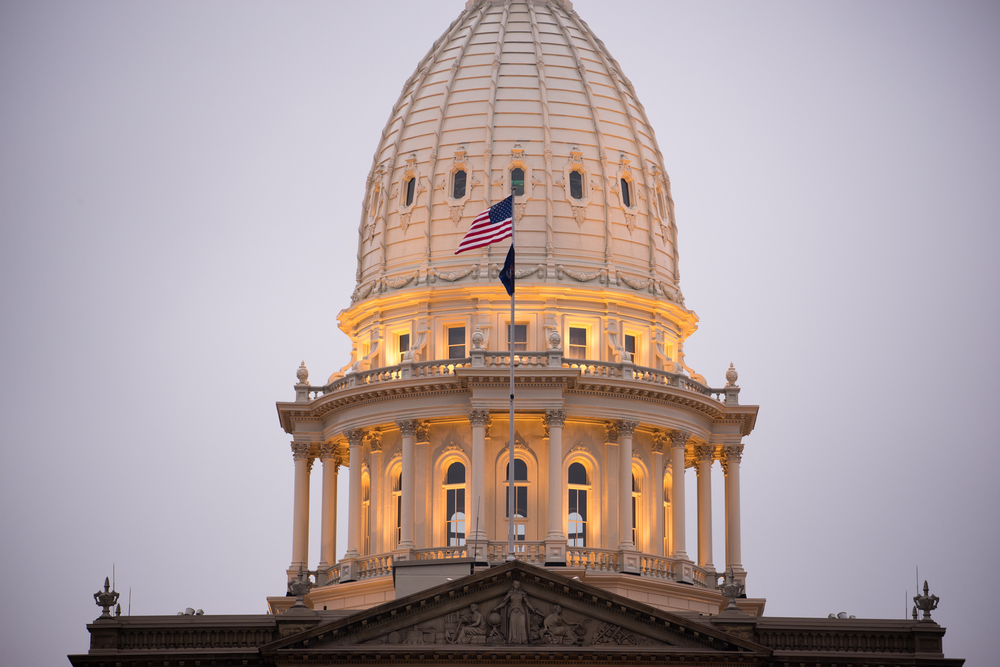One reason I enjoy visiting with donors is because, as the head of a state-based think tank, I get to offer two things I’ve found most of them value very highly. I can help their gifts produce both leverage and real-time impact. Leverage helps you do something big with limited resources and real-time impact tells you if it’s working before all the money’s gone.
A supporter told me why he gives to think tanks. “It’s leverage,” I recall him saying. “We’re not the Bill and Melinda Gates Foundation. We don’t have the resources to, say, wipe out an entire disease on the African continent by taking it head on. So we need to focus our resources at the point they have the most leverage. To us, that’s the world of ideas.”
He was expressing something the author Victor Hugo called, “stronger than all the armies of the world.” What is it? “An idea whose time has come.”
We can’t change time but we can change the times by influencing the climate of opinion in which ideas move from the people who formulate them all the way to the people who enact the laws. When think tanks do this well – by studying, developing, promoting, critiquing, defending, advocating, and communicating ideas – we shift what is called the Overton Window of Political Possibility. Ideas once deemed unacceptable (e.g., women’s suffrage, civil rights, free trade, welfare reform, etc.) come within reach. That’s what think tanks do, and that’s leverage.
If you need to move a boulder and you can afford a bulldozer, by all means just start the engine and push that big rock out of the way. That’s raw power. But if all you can afford is a stick that’s long and pretty strong, you can still move that rock if you find just the right spot to place the end of the stick, position a fulcrum under it, and apply force to the other stick’s other end. (I can’t help it; I used to be an engineer.) That’s leverage, too.
It takes longer to move a boulder with a stick than with a bulldozer, so how do we know leverage is working? We have to understand what progress looks like at steps along the way, not just at the boulder’s final destination.
Using that Leverage
Another donor and I were panelists when someone in the audience asked him, “How do you decide how much to give to different groups?” His matter-of-fact answer: It all boils down to impact. He gives more to those groups that demonstrate the most impact. He prefers groups that tell him precisely what they’re trying to accomplish and then, once a year, tell him what they accomplished.
Impact means we apply leverage to the boulder and something happens that we can measure. My organization spent more than two decades making Michigan a right-to-work state. (Right-to-work makes it illegal to fire workers for not supporting a union.) We never could have accomplished it all at once, but we could move the figurative boulder a little bit at a time. Almost every year we could show some progress – one public opinion poll at a time, one legal victory at a time, one new public endorsement at a time, one editorial approbation at a time, one new ally at a time, one new reform at a time – until the politically impossible became the politically inevitable, to paraphrase Milton Friedman.
Success breeds success, so we helped make Indiana a right-to-work state just before Michigan, and followed that up with victories in Wisconsin and West Virginia and we’re not through yet. A little leverage, applied over time, led to astounding and continuing real-time impact.
Right-to-work is a vivid example of the impact of investing in a state-based think tank. When free-market reforms are gridlocked in Washington, the state think tanks offer 50 different ways to advance sound policies that would hit a brick wall in D. C. They offer a mirror-image approach to the federalist framework of the U. S. Constitution, which has been likened to “laboratories of democracy.”
The Impact of State-Based Giving
A wise political observer once said, “Change doesn’t begin in Washington. It ends there.” I would add that change begins in the states.
Think about these things to take the next step:
- State think tanks aren’t typically mentioned in the national press as much as D.C.-based organizations, but most policy communities in state capitals know their “local” think tank and its impact far better than they do any national group.
- Most state think tanks are geared for impact in their current legislative session to a far greater degree than D. C. groups.
- Leaders of effective think tanks can tell you what policy goals they’re trying to accomplish, how, by when they’ll know if they succeeded, and what they’ve learned from past efforts.
- Most state think tanks focus not just on a state, but they also tend to specialize in a handful of areas of expertise. This is ideal for donors who want to match their giving with their areas of greatest interest. I believe a dollar given to a state think tank produces more durable policy change than a dollar given anywhere else.
- Many donors want to support more than one state think tank but it’s overwhelming to learn about scores of them. The State Policy Network is a great organization that maintains a current listing, by state, and also conducts one of the very best free-market policy conferences of the year. It’s a fantastic place to be energized by successes, inspired by possibilities, and to meet the best people in the network.
Philanthropists interested in policy change gain unique leverage when they give to think tanks. More specifically, they can fuel real-time results more quickly by supporting state-based think tanks.
This article was originally published at the Intentional Giving Blog, where you can read more insights about philanthropy.



